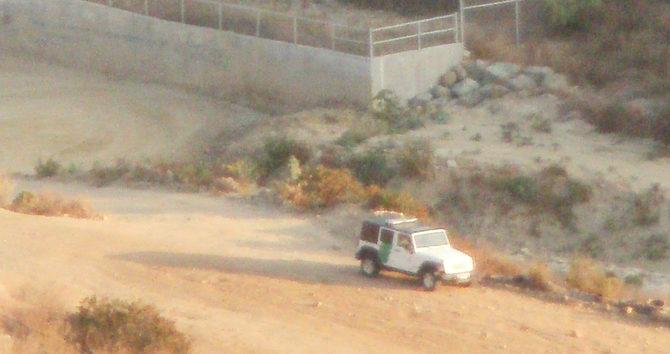 Facebook
Facebook
 X
X
 Instagram
Instagram
 TikTok
TikTok
 Youtube
Youtube

Faced with huge budget cuts at the midpoint of their fiscal year, Border Patrol agents from the Imperial Beach station (and other stations along the border) are doubling up in many of the patrol vehicles to cut gasoline costs rather than make further cuts to agents' pay and hours.
"It's not an across-the-board approach along the whole border," National Border Patrol Council spokesman Shawn Moran said. "Each station and each sector is handling the cuts differently."
But it does mean less coverage at the border, he said.
"I'm sure the spotters [people who watch the border fence for drug and human smugglers] already know," Moran said. "We have definitely seen an upsurge in illegal-alien and drug-smuggling activity because they know we face more challenges responding."
In a single incident last week, two vehicles containing 35 people (27 men and 8 women) crossed the border near Smuggler's Gulch. For vehicles to make it across the heavily fenced and patrolled area is very unusual. They got through by compromising the fence, according to Border Patrol spokesman Gerardo Gutierrez, who declined to provide details on how the fence was compromised.
Even though many of the sequestration cuts were avoided, the Border Patrol budget reportedly took a $600 million hit — and the cuts came when the agency's annual budget was half-spent. So, each sector chief and station was left to figure out how to make up for money that disappeared.
Customs and Border Protection, the parent agency for the Border Patrol, won't discuss how the budget cuts are being handled. Instead, they released the following statement:
“The effects of sequestration continue to have serious impacts on CBP’s operations including nearly $600 million in cuts. We continue to encourage all parties to work together on a solution that can replace sequestration entirely and avoid the damaging impacts to CBP and critical services across the country.”


Faced with huge budget cuts at the midpoint of their fiscal year, Border Patrol agents from the Imperial Beach station (and other stations along the border) are doubling up in many of the patrol vehicles to cut gasoline costs rather than make further cuts to agents' pay and hours.
"It's not an across-the-board approach along the whole border," National Border Patrol Council spokesman Shawn Moran said. "Each station and each sector is handling the cuts differently."
But it does mean less coverage at the border, he said.
"I'm sure the spotters [people who watch the border fence for drug and human smugglers] already know," Moran said. "We have definitely seen an upsurge in illegal-alien and drug-smuggling activity because they know we face more challenges responding."
In a single incident last week, two vehicles containing 35 people (27 men and 8 women) crossed the border near Smuggler's Gulch. For vehicles to make it across the heavily fenced and patrolled area is very unusual. They got through by compromising the fence, according to Border Patrol spokesman Gerardo Gutierrez, who declined to provide details on how the fence was compromised.
Even though many of the sequestration cuts were avoided, the Border Patrol budget reportedly took a $600 million hit — and the cuts came when the agency's annual budget was half-spent. So, each sector chief and station was left to figure out how to make up for money that disappeared.
Customs and Border Protection, the parent agency for the Border Patrol, won't discuss how the budget cuts are being handled. Instead, they released the following statement:
“The effects of sequestration continue to have serious impacts on CBP’s operations including nearly $600 million in cuts. We continue to encourage all parties to work together on a solution that can replace sequestration entirely and avoid the damaging impacts to CBP and critical services across the country.”
Comments